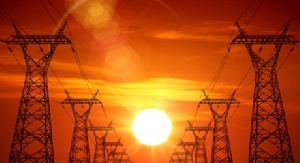- Home - News
- TWI News | TV
- Polls
- Year In Review
- News Archive
- Crime & Punishment
- Politics
- Regional
- Editorial
- Health
- Ghanaians Abroad
- Tabloid
- Africa
- Religion
- Election 2020
- Coronavirus
- News Videos | TV
- Photo Archives
- News Headlines
- Press Release
Business News of Tuesday, 17 December 2013
Source: B&FT
Comment: Satisfy local demand before exporting!
Demand for electricity keeps growing, and it is reckoned that this growth is about 10 percent annually.
Government targeted increasing the country’s energy capacity by 500 megawatts this year, and judging from the expected completion of the Bui Dam project this year, the target is realisable given the fact that Bui will generate 400 megawatts.
Pre-feasibility studies have started on the proposed construction of the Pwalugu multi-purpose dam, which should commence from 2017 and be completed in 2022. The feasibility studies should be completed in April 2015 and the contract for construction awarded by September of the same year.
The project will be built along the White Volta Dam in the Upper East and Northern regions and will generate the much-needed additional power to solve the energy demands of the nation. In addition to providing energy requirements, the project will also provide irrigation facilities for livelihood empowerment, while enhancing fishing as a means of livelihood.
Thus the construction of the dam has multiple economic benefits to the people within the catchment area and will go some way to generate employment and create employment opportunities.
The Minister of Energy and Petroleum, Mr. Armah Kofi Buah, has pledged government’s commitment to increasing the energy generating capacity in view of increasing demand for electricity. He has therefore asked power-producing companies to work closely to ensure government’s vision of making the country a net exporter of power in the shortest possible time.
However, the Paper would like to remind the Minister that the focus should be more geared towards providing the domestic power needs of the country; and when there is excess, we can propose exporting power.
This is important since the Akosombo Dam was exporting power to some neighbours in the sub-region in spite of the fact that the country experienced shortfalls in energy supply. As the economy grows, the energy demand requirements grow in tandem, and it is important that domestic demand is satisfied before considering exporting the excess supply.











